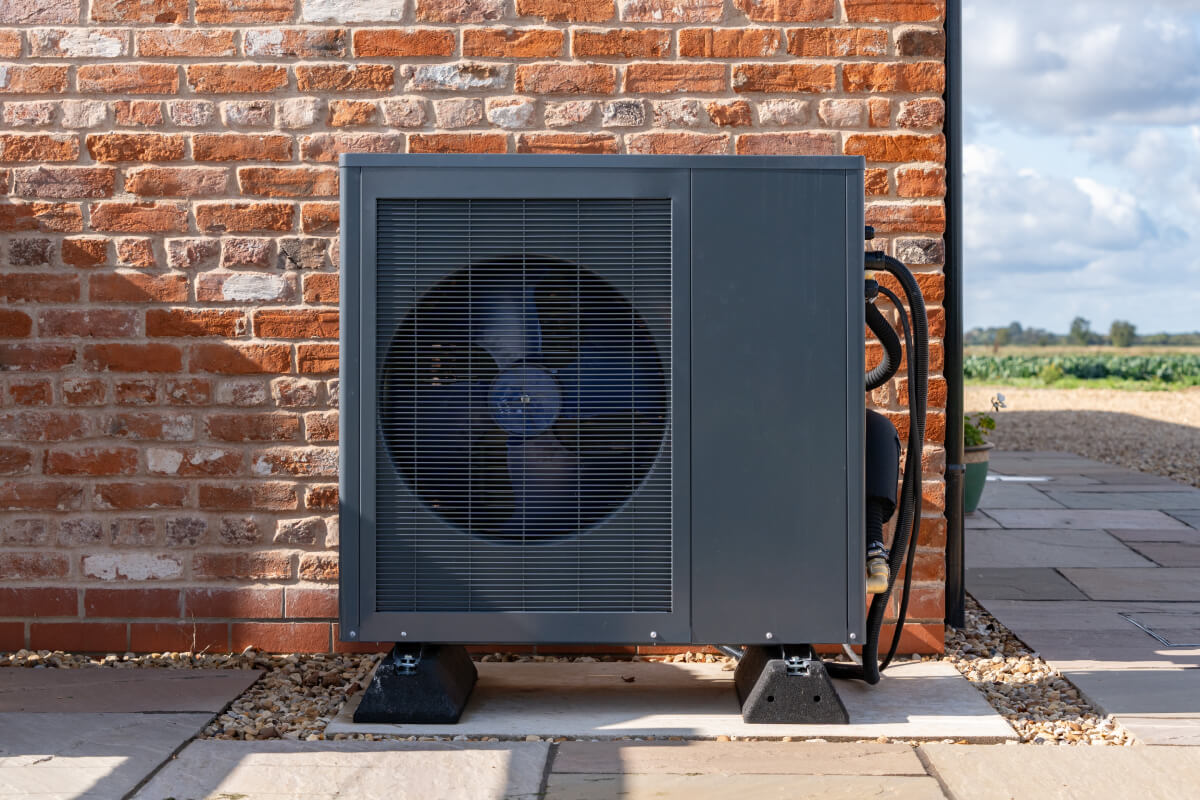Heatpumps
Air to water Heatpumps or air source heat pumps are an established technology that has been growing in popularity throughout the world over the last 50 years.
Heatpumps can provide 100% of your heat and hot water needs, providing a warm comfortable environment in your home. Heatpumps are highly efficient as the ratio of energy used by the Heatpump is low in comparison to the heat output.

How Air to Water Heat Pumps Work
The heat pump’s outdoor unit extracts heat energy from the air and transfers this to the refrigerant in the system which is then compressed to raise the temperature. This heat from the raised temperature refrigerant is transferred via a heat exchanger to the heating or hot water depending on requirements. This transfer can be completed within the outdoor unit in Mono-Bloc systems or in the case of a Bi Bloc systems refrigerant pipe connects to an indoor unit and the transfer of heat to water is completed in the indoor unit. In this way, up to 80% of the heat energy required is taken from the ambient air – even in extremely low temperatures.
As part of the assessment, we will examine your radiators and determine if these could be retained or if these need to be replaced or we can consider underfloor heating. Our specialist team will discuss all these options with you and make recommendations based on the details in your assessment prior to any work commencing.
Heat Pumps in Retrofit Homes
Commissioning
Once an air to water heat pump system has been installed we will commission the unit which means that it will be set to perform to optimum efficiency leaving you to manage your heating and hot water using your user-friendly controls. We can also provide options for Smart control and monitoring of your heat pump.
Home Comfort Retrofits has longstanding experience in the specification and installation of air to water heat pumps and our installers have completed manufacturer training by many of the leading brands available in Ireland. We are experienced in specifying and correctly sizing heat pumps for retrofit homes using the details outlined in the Home Energy Assessment and the properties of each individual home. As part of our fabric first approach, we will only install an air to water heat pump in homes that are sufficiently insulated to ensure that the heat pump will perform to the required standards.

News
Shane Duffy of Home Comfort Retrofits explains why heat pumps are a great choice if you’re upgrading your home.
Sign up to the monthly SEAI Heat Pump ezine.